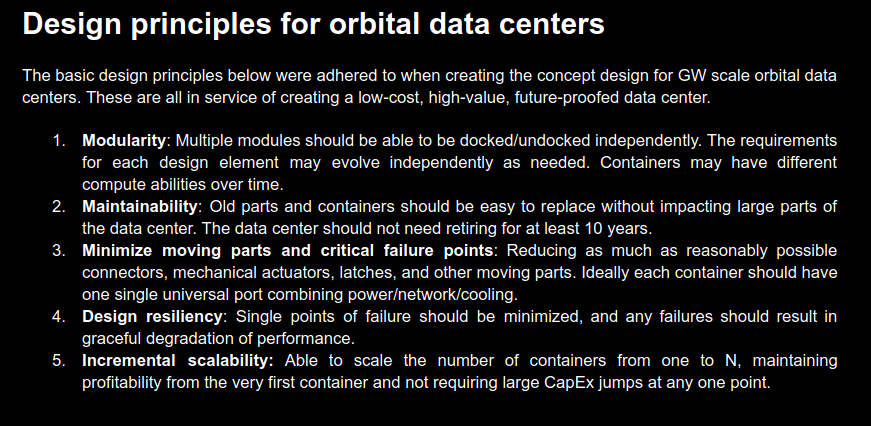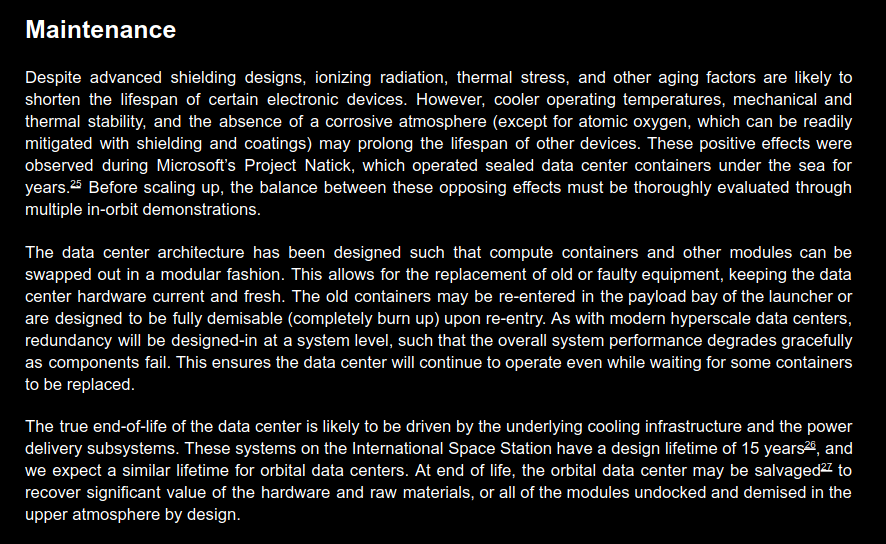Need to let loose a primal scream without collecting footnotes first? Have a sneer percolating in your system but not enough time/energy to make a whole post about it? Go forth and be mid: Welcome to the Stubsack, your first port of call for learning fresh Awful you’ll near-instantly regret.
Any awful.systems sub may be subsneered in this subthread, techtakes or no.
If your sneer seems higher quality than you thought, feel free to cut’n’paste it into its own post — there’s no quota for posting and the bar really isn’t that high.
The post Xitter web has spawned soo many “esoteric” right wing freaks, but there’s no appropriate sneer-space for them. I’m talking redscare-ish, reality challenged “culture critics” who write about everything but understand nothing. I’m talking about reply-guys who make the same 6 tweets about the same 3 subjects. They’re inescapable at this point, yet I don’t see them mocked (as much as they should be)
Like, there was one dude a while back who insisted that women couldn’t be surgeons because they didn’t believe in the moon or in stars? I think each and every one of these guys is uniquely fucked up and if I can’t escape them, I would love to sneer at them.
(Semi-obligatory thanks to @dgerard for starting this)
this isn’t surprising, but it turns out that when tested, LLMs prove to be ridiculously terrible at summarizing information compared with people
I’m sure every poster who’s ever popped in to tell us about how extremely useful and good LLMs are for this are gonna pop in realsoonnow
Interview with the president of the signal foundation: https://www.wired.com/story/meredith-whittaker-signal/
There’s a bunch of interesting stuff in there, the observation that LLMs and the broader “ai” “industry” wee made possible thanks to surveillance capitalism, but also the link between advertising and algorithmic determination of human targets for military action which seems obvious in retrospect but I hadn’t spotted before.
But in 2017, I found out about the DOD contract to build AI-based drone targeting and surveillance for the US military, in the context of a war that had pioneered the signature strike.
What’s a signature strike?
A signature strike is effectively ad targeting but for death. So I don’t actually know who you are as a human being. All I know is that there’s a data profile that has been identified by my system that matches whatever the example data profile we could sort and compile, that we assume to be Taliban related or it’s terrorist related.
this mostly uses metadata as inputs iirc. basically somedude can be flagged as “frequent contact of known bad guy” and if he can be targeted he will be. this is only one of many options. this is also basically useless in full scale war, but it’s custom made high tech glitter on normal traffic analysis for COIN
Fellas, my in laws gave me a roomba and it so cute I put googly eyes on it. I’m e/acc now
please be very careful with the VSLAM (camera+sensors) ones, and note carefully that iRobot avoided responsibility for this by claiming the impacted people were testers (a claim the alleged testers appear to disagree with)
On bsky you are required to post proof of cat, here at e/acc you are required to post proof of googly roomba
This is a little too low hanging for its own post, spotted this from reddit:
There is an übermensch and there is an untermensch.
The übermensch are masculine males, the bodybuilders I follow that are only active in the gym and on the feed; the untermensh are women and low-T men, like my bluepilled Eastern European coworker whose perfectly fine with non-white immigration into my country.
The übermensch also includes anybody whose made a multi-paragraph post on 4chan with no more than one line break between each paragraph. It also includes people at least and at most as autistic as I am.
Wow the first reply is quite unhinged.
More on topic, that isn’t low hanging fruit, that is Exhibit C in the discrimination lawsuit.
I think she won that one. Was a bit unclear, but I recall seeing a tweet from grimes that she has access to her kids again. (Not sure if it was a real tweet).
https://xcancel.com/HeyMichaud
This is certainly… something
Yeah that reads as a cry for help. (But I doubt it is, he prob just feels like he is onto something with a righteous/spiritual feeling.)
And well, he could even be onto something, he could become quite popular, peterson had the same sort of feeling (it is in the foreword of one of his books) and look how big he got. He certainly got more followers than I have. ;)
I read the white paper for this data centers in orbit shit https://archive.ph/BS2Xy and the only mentions of maintenance seem to be “we’re gonna make 'em more reliable” and “they should be easy to replace because we gonna make 'em modular”
This isn’t a white paper, it’s scribbles on a napkin


there’s so much wrong with this entire concept, but for some reason my brain keeps getting stuck on (and I might be showing my entire physics ass here so correct me if I’m wrong): isn’t it surprisingly hard to sink heat in space because convection doesn’t work like it does in an atmosphere and sometimes half of your orbital object will be exposed to incredibly intense sunlight? the whitepaper keeps acting like cooling all this computing shit will be easier in orbit and I feel like that’s very much not the case
also, returning to a topic I can speak more confidently on: the fuck are they gonna do for a network backbone for these orbital hyperscale data centers? mesh networking with the implicit Kessler syndrome constellation of 1000 starlink-like satellites that’ll come with every deployment? two way laser comms with a ground station? both those things seem way too unreliable, low-bandwidth, and latency-prone to make a network backbone worth a damn. maybe they’ll just run fiber up there? you know, just run some fiber between your satellites in orbit and then drop a run onto the earth.
everyone who’s ever done physical cabling knows aaallll about dropping cables upward
Easy, the cables go into the space elevator. Why do you all have to be so negative, don’t you have any vision for the future?
You’re entirely right. Any sort of computation in space needs to be fluid-cooled or very sedate. Like, inside the ISS, think of the laptops as actively cooled by the central air system, with the local fan and heatsink merely connecting the laptop to air. Also, they’re shielded by the “skin” of the station, which you’d think is a given, but many spacebros think about unshielded electronics hanging out in the aether like it’s a nude beach or something.
I’d imagine that a serious datacenter in space would need to concentrate heat into some sort of battery rather than trying to radiate it off into space. Keep it in one spot, compress it with heat pumps, and extract another round of work from the heat differential. Maybe do it all again until the differential is small enough to safely radiate.
while radiating out waste heat at higher temp would be easier it’ll also take up valuable power, and either i don’t get something or you’re trying to break laws of thermodynamics
I was also momentarily nerdsniped earlier by looking up the capacity of space power tech[0] (panel yields, battery technology, power density references), but bailed early because it’ll actually need some proper spelunking. doubly so because I’m not even nearly an expert on space shit
in case anyone else wants to go dig through that, the idea: for compute you need power (duh). to have power you need to have a source of energy (duh). and for orbitals, you’re either going to be doing loops around the planetoid of your choice, or geostationery. given that you’re playing balancing jenga between at minimum weight, compute capacity, and solar yield, you’re probably going to end up with a design that preferences high-velocity orbitals that have a minimal amount of time in planetoid shadow, which to me implies high chargerate, extremely high cycle count ceiling (supercaps over batteries?), and whatever compute you can make fit and fly on that. combined with whatever the hell you need to do to fit your supposed computational models/delivery in that
this is probably worth a really long essay, because which type of computing your supposed flying spacerack handles is going to be extremely selected by the above constraints. if you could even make your magical spacechip fucking exist in the first place, which is a whole other goddamn problem
[0] - https://www.nasa.gov/smallsat-institute/sst-soa/power-subsystems/ (warning: this can make hours of your day disappear)
BasicSteps™ for making cake:
- Shape: You should chose one of the shapes that a cake can be, it may not always be the same shape, depending on future taste and ease of eating.
- Freshness: You should use fresh ingredients, bar that you should choose ingredients that can keep a long time. You should aim for a cake you can eat in 24h, or a cake that you can keep at least 10 years.
- Busyness: Don’t add 100 ingredients to your cake that’s too complicated, ideally you should have only 1 ingredient providing sweetness/saltyness/moisture.
- Mistakes: Don’t make mistakes that results in you cake tasting bad, that’s a bad idea, if you MUST make mistakes make sure it’s the kind where you cake still tastes good.
- Scales: Make sure to measure how much ingredients your add to your cake, too much is a waste!
Any further details are self-evident really.
Design principles for a time machine
Yes, a real, proper time machine like in sci-fi movies. Yea I know how to build it, as this design principles document will demonstrate. Remember to credit me for my pioneering ideas when you build it, ok?
- Feasibility: if you want to build a time machine, you will have to build a time machine. Ideally, the design should break as few laws of physics as possible.
- Goodness: the machine should be functional, robust, and work correctly as much as necessary. Care should be taken to avoid defects in design and manufacturing. A good time machine is better than a bad time machine in some key aspects.
- Minimize downsides: the machine should not cause exessive harm to an unacceptable degree. Mainly, the costs should be kept low.
- Cool factor: is the RGB lighting craze still going? I dunno, flame decals or woodgrain finish would be pretty fun in a funny retro way.
- Incremental improvement: we might wanna start with a smaller and more limited time machine and then make them gradually bigger and better. I may or may not have gotten a college degree allowing me to make this mindblowing observation, but if I didn’t, I’ll make sure to spin it as me being just too damn smart and innovative for Harvard Business School.
- Safety: we need to make sure a fly isn’t inside, or can’t enter(!), the time machine while a human is inside during operation
You joke, but my startup is actually moving forward on this concept. We already made a prototype time travel machine which while only being able to travel forward does so at a promising stable speed (1). The advances we made have been described by the people on our team with theoretical degrees in physics as simply astonishing, and awe-inspiring. We are now in an attempt to raise money in a series B financing round, and our IPO is looking to be record breaking. Leave the past behind and look forward to the future, invest in our timetravel company xButterfly.










